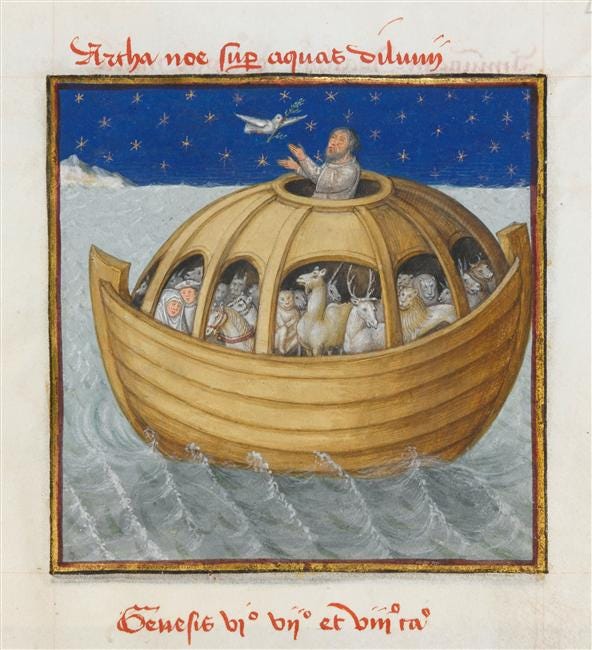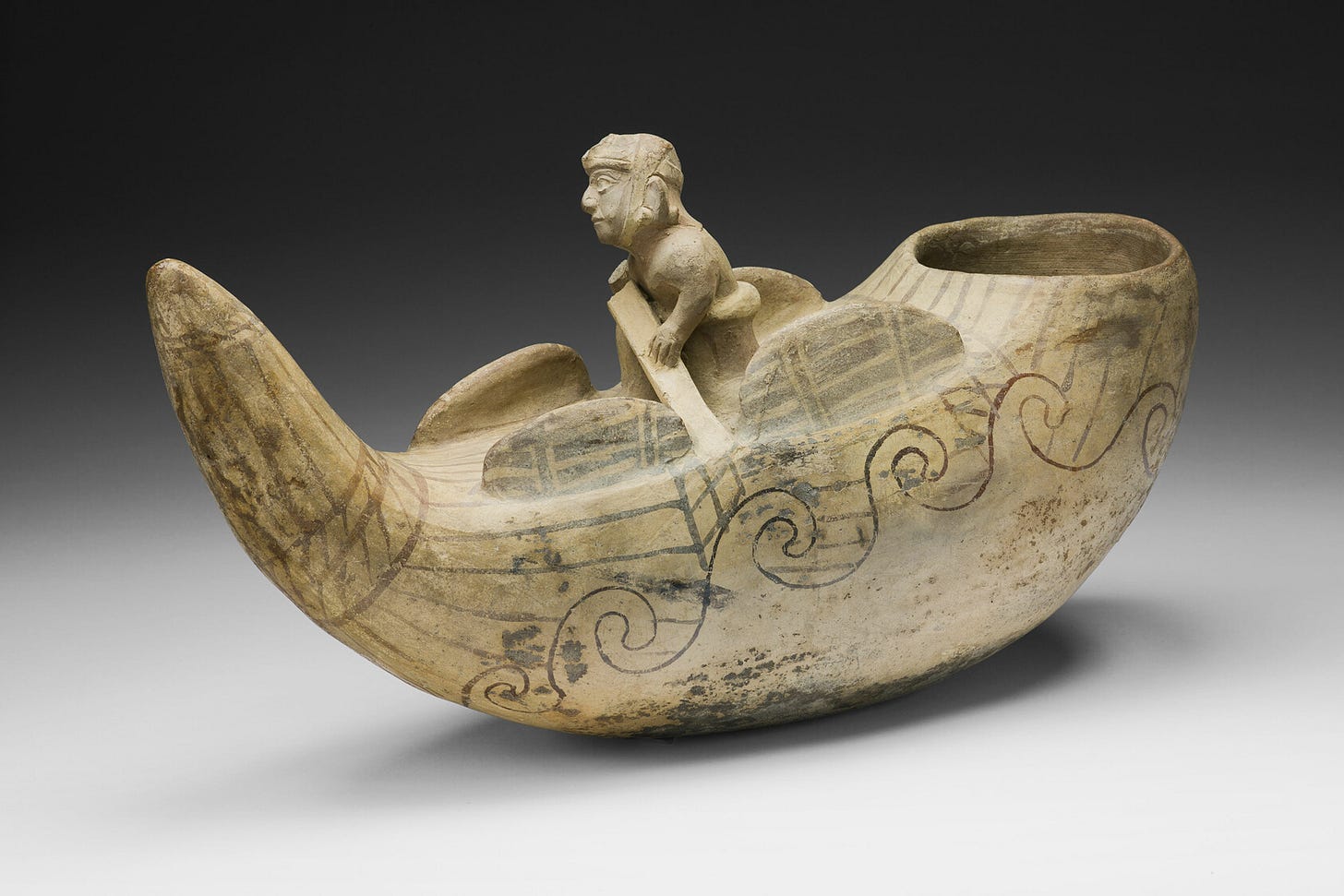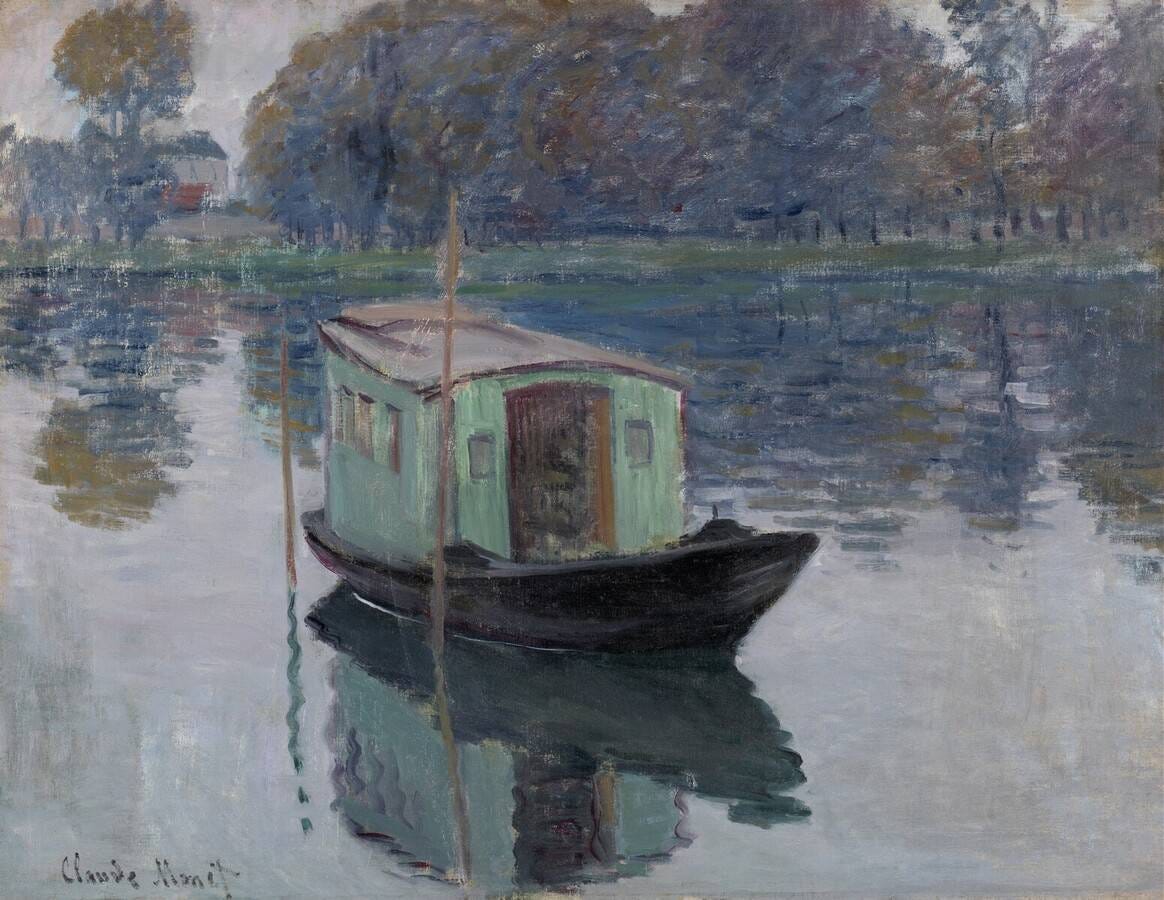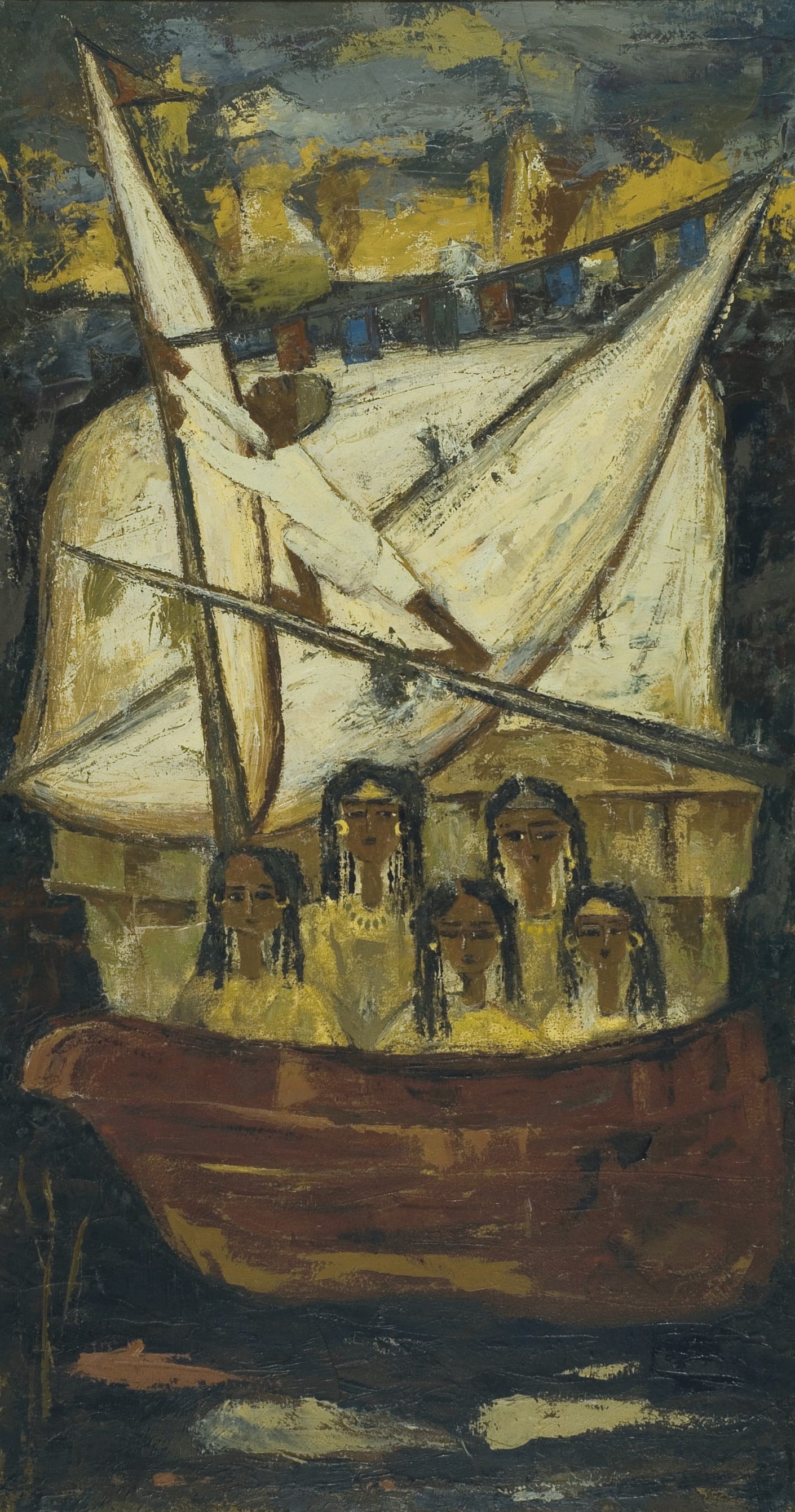#96. BOAT / BARCA
It is good to have an end to journey towards / És bo tenir un final cap a on dirigir el viatge
I’m nobody! Who are you?
Are you nobody, too?
Then there’s a pair of us — don’t tell!
They’d banish us, you know.
How dreary to be somebody!
How public, like a frog
To tell your name the livelong day
To an admiring bog!
Emiliy Dickinson
BOAT
Boats, like carriages and cars, are an archetypal image of the inner journey, the vehicle that transports consciousness. Ships of the dead are present in all cultures. But boats appear also as a representation of birth. In Egypt, the deceased had to traverse twelve regions of the underworld in a sacred boat until they found the rising sun. The boat is the coffin and death is the navigator, but it is not the last journey, but the first. Charon evokes the journey towards a new state of consciousness. Japanese iconography depicts Amida, the main bodhisattva of Mahāyāna Buddhism, with a boat-shaped halo to indicate that it leads us to an infinite ocean beyond the biological body. In the West, bargees are often tenebrous figures, whereas Amida is a good fortuned boatman. Wherever they lead us, boats are associated with safety and firmness. Noah’s ark embodies protection in the middle of the storm. Alchemy described the process of psychological evolution of the Great Work as a circumnavigation through earth’s four confines: a long, heroic, heavy and dangerous odyssey. The set of events of a human life —a journey back to the starting point— are incarnated by an image of a boat.
“It is good to have an end to journey towards; but it is the journey that matters, in the end.”
Ursula K. Le Guin
Jo no soc ningú. Qui ets tu?
Ets tu, ningú, també?
Som nosaltres, ja, un parell?
No ho diguis! Ho anunciarien, saps?
Que lúgubre, ser qualcú!
Que públic, com la granota
Dient el seu nom, tot el sant juny
A una bassa embadalida!
Emiliy Dickinson (Traducció de Joan Cerrato)
BARCA
La barca és una imatge arquetípica del viatge interior juntament amb el carro i el cotxe, el mitjà de transport de la consciència. La barca dels morts és present en totes les cultures. Però també sol aparèixer com a representació del naixement. A Egipte, els difunts havien de travessar dotze regions del món inferior en una barca sagrada fins a trobar el sol naixent. La barca és el taüt i la mort és el navegant però no es tracta de l’últim viatge, sinó del primer. Caront evoca precisament el viatge cap un nou estat de consciència. La iconografia japonesa representa Amida, el principal bodhisattva del budisme mahāyāna, amb una aureola en forma de barca per indicar que ens condueix cap a l’oceà infinit que hi ha més enllà del cos biològic. A Occident els barquers solen ser figures tenebroses, en canvi, Amida és un barquer de bon auguri. Portin a on portin, les barques transmeten seguretat i fermesa. L’arca de Noé encarna la protecció al mig de la tempesta. L’alquímia descrivia el procés d’evolució psicològica de la Gran Obra com una circumnavegació a través dels quatres confins de la terra: una odissea llarga, heroica, pesada i plena de perills. El conjunt dels esdeveniments d’una vida humana —un viatge d’anada i tornada al punt de partida— són encarnats per la barca.
“És bo tenir un final cap a on dirigir el viatge, però és el viatge el que importa, al final.”
Ursula K. Le Guin








